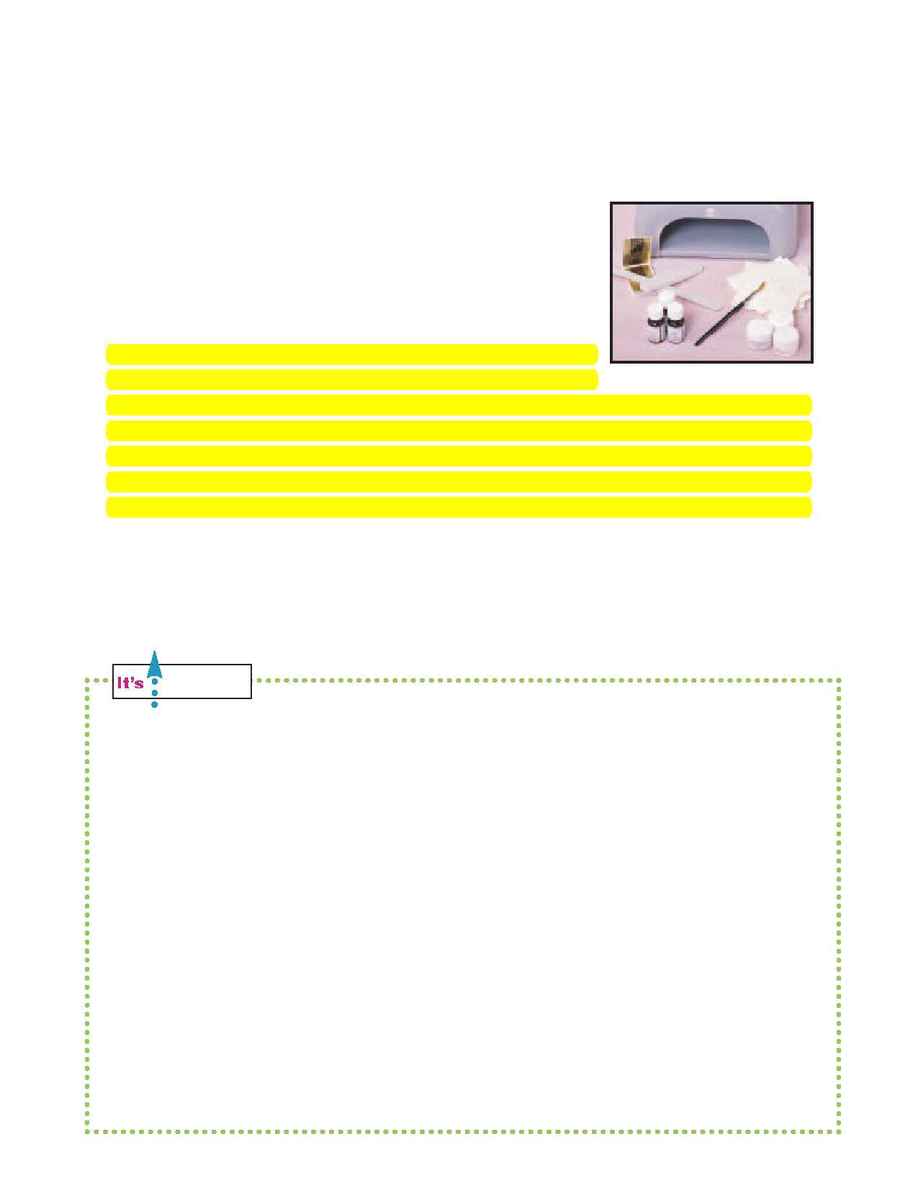
Wrapped or Fiberglass Nails
Fiberglass is a loosely woven mesh, thicker than silk, that adds strength to the nail. It can be applied
over the natural nail or tips and is produced by applying a resin (thick adhesive) over the fiberglass.
The resin is then hardened with a catalyst, which is usually in a spray form. The nail is then filed
and buffed smooth to produce a natural-looking nail.
Care should be taken in applying resin. If the resin is applied too thick
or the spray catalyst is sprayed too closely, it can cause a heat reac-
tion.
Light-Cured or Gel Nails
This product is simply an acrylic gel that is applied to the nail plate,
after which the hand is placed under a special light (ultraviolet or halo-
gen) that creates a chemical reaction that causes the product to harden. This process is called "curing"
the nail. This product is used to reinforce weak nails or can be used over tips to add sheen and
strength. Manufacturers have created different gels to act as bonding agents for tips, nail builders or
thickeners and nail glosses for shine. It is a fast and economical service for the client and an excellent
way to help a client develop beautiful strong nails. Always follow manufacturer's directions carefully.
This chapter has provided you with a strong foundation in both natural and artificial nail care. Pro-
viding high quality nail services to your clients can be an added benefit to them, while offering you
an opportunity for additional income.
598
SALON FUNDAMENTALS
It's
2
U
!
Build Your Critical Thinking Skills
In this chapter you have prepared yourself to meet the following Industry Standards for entry-level
cosmetologists:
· Provide basic manicure and pedicure services
· Conduct services in a safe environment and take measures to prevent the spread of
infectious and contagious disease
It's Up to You to know what to do. Using your training to this point, review the following case
scenario and think through how you would handle the challenge.
1. A client scheduled for a sculptured nail service at 2:30 today is seated at your work station.
You have washed and sanitized both your hands and your client's hands. You notice that the
client has tiny rings with blisters that are reddish in color on several fingers. You also notice
dry flakes of skin surrounding the area. The client is dismissing the area by saying that her
hands always look that way when she has done a lot of dishwashing. What would you do?
